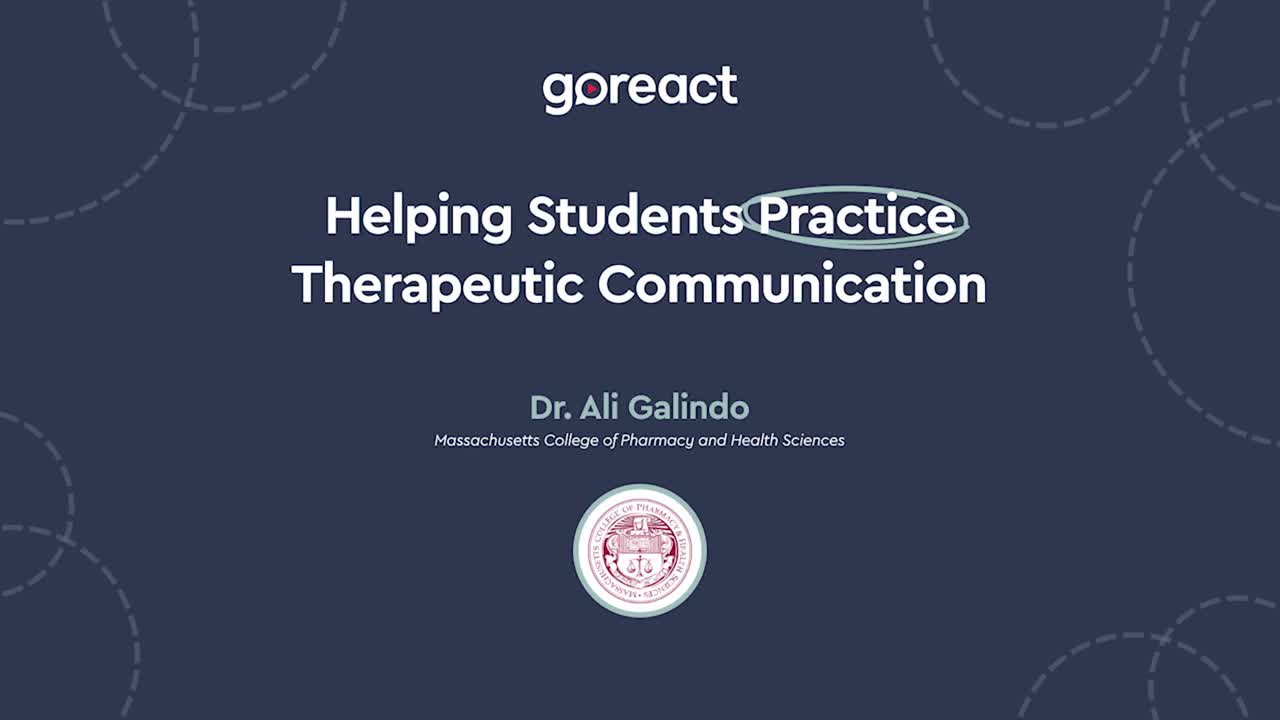Dr. Ali Galindo:
So the platform is really that, it’s a platform. It’s how the faculty, and that’s one of the things I found in the literature, how does the faculty implement the assignment to reach the objectives for the course and then the end of program outcomes. So essentially, we know that with this pandemic, one of the biggest struggles we’ve had is that lack of ability to communicate with a real person. We’ve done so many things virtually and we can still help the students with not just the theoretical and didactic portion of what is important in therapeutic communication, but have them practice either on a friend on the phone. I had some students do that. If they didn’t have family members or a friend that they could do a health history on.
Dr. Ali Galindo:
In this particular example, I’m going to show you a nurse practitioner, student doing a health history. It’s a mental health history. They’re going to talk about anxiety and depression and she’s going to be screening this particular student. And you can see that even as analysis case, when a student does very, very well, there are always cases where we can still give constructive feedback. And the students crave this. They really want this feedback. So let’s listen real quickly to where I say, “Give me a little bit more information,” here at the timestamp of 1:17.
Speaker 4:
Just more anxious.
Speaker 5:
Anxious.
Speaker 4:
Yeah.
Speaker 5:
Have you ever felt so discouraged?
Dr. Ali Galindo:
She’s moving on now to assess if the patient is feeling depressed and kind of left anxiety in the back. Now, it’s important to get to that point, but we have a process in our interviewing where the patient gives us a key anxiety and we want to address a little more, how high is the anxiety on a scale of one to 10? How often are you anxious, et cetera, et cetera. And I want to show you something funny. We all know about mental health assessment. I found this here and I’m like, I don’t remember why I said something about her expression. So let’s go to 2:47.
Speaker 4:
Donald Trump.
Speaker 5:
World backwards.
Speaker 4:
D L R O W.
Speaker 5:
Can you count from a hundred backwards by sevens. 100, 93.
Speaker 4:
It’s going to take a while. I’ll have to use my fingers.
Dr. Ali Galindo:
Have to use her fingers, it’s going to take a while. So I commented, in a real time way, her expression is priceless. That would be mine too. Oh my gosh, let me use my fingers. And maybe smaller integers would be better if you have somebody where math is not their strong suit. Sometimes we ask them to count backwards by three. So you can see how this provides a formal and informal environment to tell the student you’re doing great, you’re doing good, good job, this patient was just really funny and she was acting a role. She wasn’t really being forthcoming. And just even if they’re doing well, certain things, don’t forget to ask them if you’re asking them about smoking, about vaping as well. And why are these part of the mental health assessments? Now I had a question here for the student. The student can go back and actually ponder the question or even respond to the instructor, which is really nice. It’s like a chat box also, between the student and the instructor.





